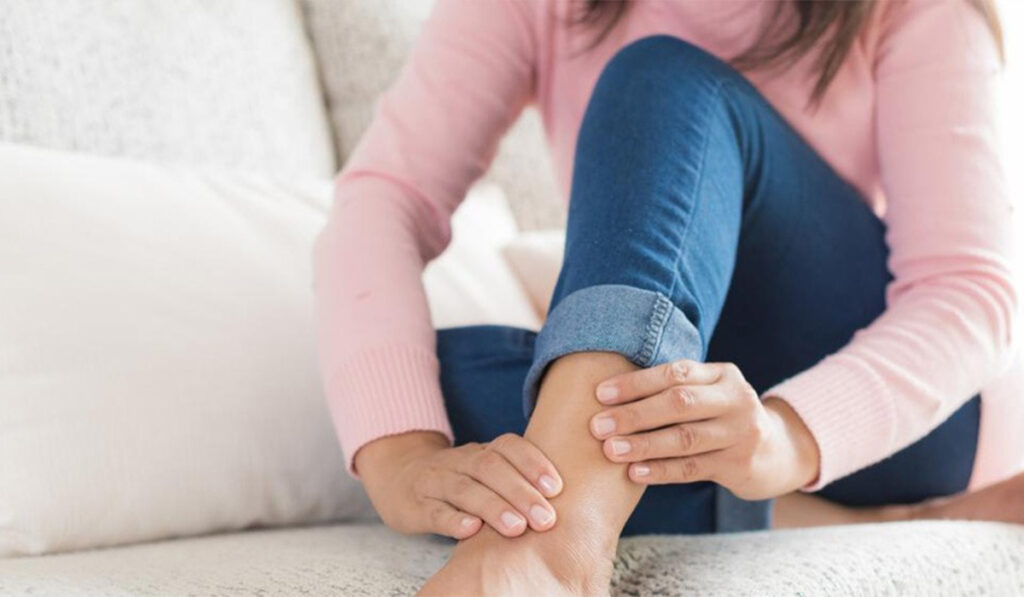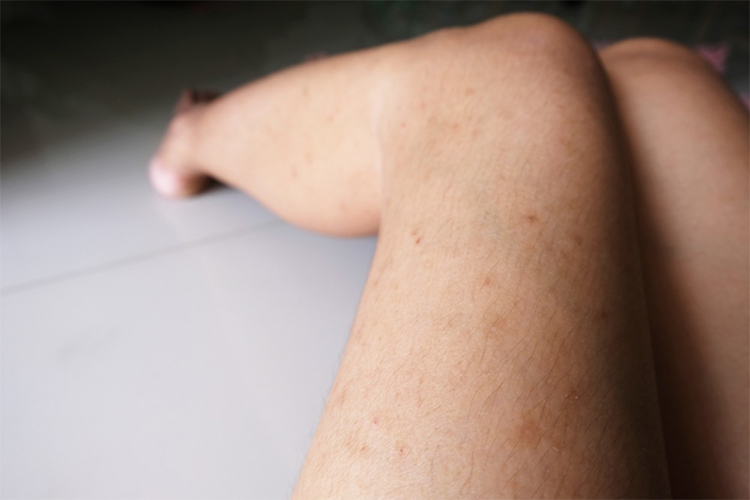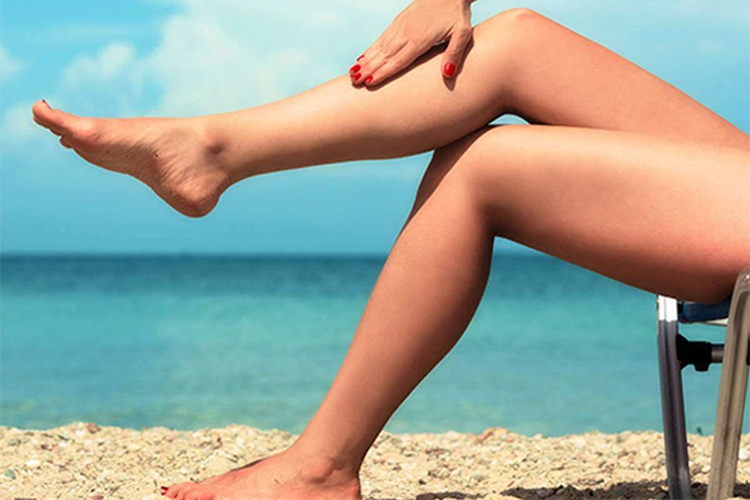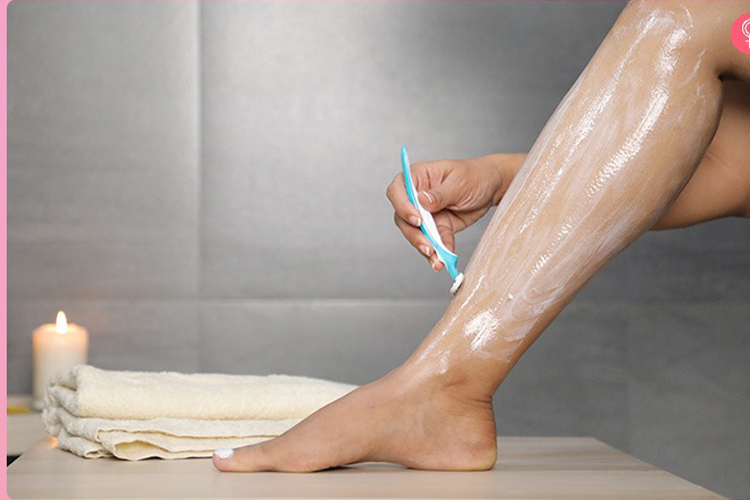
Dark spots on legs: causes, home remedies and treatment
If you are worried about dark spots on legs, we have the solution for you. Dark spots or hyperpigmentation can appear on any part of the body. However, that shouldn’t stop you from flaunting your shortest shorts this summer. That’s because you can easily remove the spots with the right treatment and skin care routine.
Scroll through this article to understand why you develop dark spots on your legs, how to prevent them, and treatment options.
1. Excessive sun exposure
Dark spots typically result from excessive sun exposure and UV damage. The UV rays cause your skin to produce melanin to protect itself from them. However, some areas can experience excess melanin production, making them appear darker than the surrounding skin. Prolonged exposure to the sun can also lead to sunspots and skin cancer, especially in fair-skinned people.
A national SMS-based survey was conducted among 977 participants to examine sun protection knowledge, experience and behavior among US youth. Only 62.1% of the participants rated sun protection as very important, 25.5% as important and 5.4% as fairly important.

2. Improper shaving
Improper shaving technique can cause tiny black spots on the legs, also known as strawberry skin. This is distinct from hyperpigmentation and occurs in a pattern very similar to skin pores and hair follicles.
This harmless skin condition is caused when you use old and dull razors and use hair removal methods like hot wax. This leads to ingrown hairs, clogged pores, rough dark spots, tiny bumps, and pigmentation.
3. Melanoma
Black and brown spots on legs can also be a dangerous skin condition called melanoma, a type of skin cancer (1). These spots generally originate on the lower legs and tend to change color and size. Melanomas on the skin are caused by excessive exposure to UV rays and the use of sunbeds for artificial tanning. If you notice any changes in the dark spots on your legs, get them checked out by a doctor as soon as possible.
According to statistics from the Centers for Disease Control and Prevention, the prevalence of melanoma increases with age. Aging is the number one risk factor for the US population. Check out the chart below for the melanoma rate in the US population by age.
arm water and pat your skin dry.
If your skin looks yellow, dip a cotton pad in some milk and rub it on your face for a few minutes.
Rinse your face again.
How often can you do this?
Three times per week.
Why this works
Milk has excellent cleansing properties that help remove dirt, dead skin cells, and other impurities from your skin (15). These turmeric face masks are effective against acne scars, pigmentation, acne, and dark spots (16). Turmeric also helps inhibit melanin production through its curcumin content. Curcumin helps block the production of ACTH, a hormone that triggers excess melanin production (17), (18).
4. Clogged pores
Just like on the face, the pores on the legs can become clogged with bacteria, dead skin and sebum. Acne-prone skin in particular tends to produce more oil and shed cells quickly. As a result, you will notice small black spots on your legs.
5. Folliculitis
Folliculitis is inflammation of the hair follicles caused by Staphylococcus aureus bacteria or other non-infectious factors such as improper shaving, waxing, and wearing tight clothing (2). This leads to red and itchy acne-like bumps on your legs that gradually turn dark.
Mild folliculitis may go away on its own. However, if left untreated, the infection can eventually lead to permanent dark spots or scarring and other skin problems.

6. Keratosis pilaris
Keratosis pilaris, or “chicken skin,” is a skin condition characterized by tiny red or brown bumps on the skin (3). They most commonly appear on the outsides of both arms, but can also appear on the thighs and buttocks. They are caused by excess keratin production, which blocks hair follicles and leads to bumps.
Although there’s no cure for it yet, skin care practices like exfoliating and moisturizing can reduce uneven skin texture and improve the appearance of your legs.
7. Diabetic dermopathy
Diabetic dermopathy is a condition in which dark spots develop on the lower legs. These spots are also known as shin spots and are common in diabetics over the age of 50. There are no clear causes for this condition. However, it is believed that the spots are caused by excessive dryness of the skin and damaged blood vessels near the dermal layer. They tend to fade away once sugar levels are under control.
Various underlying diseases and external factors can lead to skin discoloration or pigmentation on the legs. If your dark spots are caused by an underlying condition, treatment may fade them. However, if they are due to external factors and improper skin care, you can try the following treatment options to get rid of them.
DIY home remedies
1. Baking soda
Baking soda is abrasive and can help exfoliate the skin and remove dead skin cells. This can improve the appearance of black spots on your legs.
you will need
1 tablespoon baking powder
1 tablespoon of water
method
Mix baking soda and water into a paste.
Massage the affected areas with the paste for 1-2 minutes.
Leave it on for another 2 minutes.
Rinse with water.
Apply this baking soda paste every day until you see effective results.
2. Sugar and aloe vera scrub
Sugar granules act as a natural exfoliant that can help unclog your pores and remove dead skin cells. On the other hand, aloe vera moisturizes the skin and can reduce skin inflammation (4).
you will need
2-3 tablespoons of sugar
2 tablespoons of aloe vera gel
1-2 tablespoons olive oil
method
Mix all ingredients in a bowl.
Massage the scrub onto your legs in gentle circular motions.
Rinse with cold water after 10 minutes.
Use the scrub 2-3 times a week.
3. Cucumber and rose water scrub
Cucumber extract has skin lightening properties and may lower the skin’s melanin levels (5). It also moisturizes and soothes irritated skin (6). Rose water may help maintain overall skin health (7).
you will need
1 cup grated cucumber
4 tablespoons rose water
2-3 drops of olive or coconut oil
method
Mix the ingredients into a paste.
Apply to the dark spots and massage in for 10 minutes.
Rinse off the paste with water.
Then apply a moisturizer.
Use the scrub once a day.
It may take some time for home remedies to take effect. If you want visible and faster results, you can consult a dermatologist and get treatment in the office. Some of these are listed below.

Professional treatments
1. Laser therapy
Laser treatments are useful for correcting pigment spots on legs and reducing melasmai (8). Depending on the spots and your skin type, the dermatologist may use a specific wavelength laser. Some of the most common lasers used to treat hyperpigmentation and melasmai include:
Green light: Flashlamp-pumped pulsed dye laser (PDL) (510 nm), frequency-doubled QS Nd:YAG (Q-switched neodymium: yttrium aluminum garnet – 532 nm)
Red Light: QS Ruby (694nm), QS Alexandrite (755nm)
Near Infrared: QS Nd:YAG (1064 nm)
2. Cryotherapy:
In this treatment, the pimples are exposed to low temperatures (using liquid nitrogen solution) to destroy the dark skin cells. The spots may lighten as your skin begins to heal.
Although these treatment options can be effective, it is better to take care of your skin to avoid dark spots on your legs in the first place. Read on to learn some preventive measures for spots and stains on your legs.
How to prevent dark spots on legs
1. Shave properly
Oiling the skin and using a sharp and new razor is crucial to avoiding razor bumps and dark spots. Use shaving foam and shave against the direction of hair growth. Exfoliate before shaving and moisturize skin after shaving.
2. Exfoliation
Use scrubs and physical peels to unclog pores and prevent ingrown hairs. Regular exfoliation can also accelerate skin cell regeneration, improve skin texture and keep legs soft, smooth and clear. However, do not exfoliate too much as this could irritate your skin further and worsen hyperpigmentation on your legs.
3. Moisturize your skin regularly
Moisturizers keep your skin soft and relieve dryness and inflammation after shaving and exfoliating. Use lotions rich in vegetable oils and shea butter and always apply to damp skin to ensure optimal hydration by locking moisture into your skin for longer.
4. Wear sunscreen when going out
d sunscreen on your legs and other exposed areas. Reapply your sunscreen every 40-80 minutes for maximum protection. Use a sunscreen with at least SPF 30 and PA ++++ to prevent UVA and UVB damage.
Conclusion
Skin discoloration on legs and ankles can be caused by a variety of factors, including excessive sun exposure, improper shaving techniques, melanoma (a type of skin cancer), clogged pores, folliculitis, keratosis pilaris, and diabetic dermopathy. Preventive measures to avoid dark spots on legs include adequate sun protection, using sharp and new razors for shaving, regular exfoliation and regular moisturizing of the skin.
There are home remedies and professional treatments to treat dark spots on the legs. DIY remedies include using baking soda, sugar, aloe vera, cucumber, rose water, and other natural ingredients to exfoliate and lighten the spots. Professional treatments like laser therapy and cryotherapy can also be effective in reducing hyperpigmentation and melasma.
With home remedies, it is important to be patient as it may take some time before visible results are seen. For faster and more visible results, consulting a dermatologist for professional treatments can help. In addition, good skin care practices and preventative measures can help prevent dark spots and keep skin healthy and clear.
